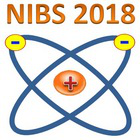Speaker
Ms
Roba Moussaoui
(Aix-Marseille University)
Description
In ITER and Demo devices, the heating of fusion plasma will be mainly provided by the injection of 1 MeV neutral deuterium atom (D) beams into tokamak. Such energetic neutrals are delivered by neutral beam injection (NBI) device. The key component of ITER NBI device is D- negative ion source, where a D- current density of 200 A/m2 is required. ITER negative ion (NI) source is based on Cs injection. It is nowadays the only scientific solution to reach such high D- negative ion current. Cesium (Cs) is injected in vapor state inside negative ion source. It deposits on the surface of plasma grid. Deposition of Cs on the grid lowers the material work function which reaches value close to 2 eV. This effect increases electron capture efficiency by particles from the plasma backscattered by the surface. Therefore, high NI yields is produced. However, severe drawbacks to the use of Cs have been identified, hence a strong reduction of Cs consumption or its elimination from the fusion negative-ion sources is highly valuable. For this reason, we are working on H-/D- negative-ion surface production in Cs-free H2/D2 plasmas.
Surface negative ion production measurements are performed in the diffusion chamber of a plasma reactor [1]. The sample is placed inside the plasma. It is negatively biased with respect to the plasma potential. So, the plasma positives ions are accelerated towards the sample surface by the electric field formed in the sheath. The positive ions bombardment leads to a negative ions surface production on the surface. The produced negative ions are accelerated towards the plasma and self- extracted from the plasma to a mass spectrometer, where they are detected according to their energy. This measurement gives the negative ion energy distribution function (NIEDF).
In this work, surface negative ions production is studied on Nanoporous 12CaO. 7Al2O3 electride surface. The material surface is exposed to low pressure hydrogen plasma created by a 2.45 GHz generator. NIEDFs were recorded in following experimental conditions: 1 Pa H2 gas pressure and microwave injected power of 60 W. The influence of surface temperature, bias and plasma exposure time on negative-ion yield is investigated. The target was negatively biased at 20 - 170 V, and it was heated from room temperature to 500°C. The effect of the duration of high energy H3+ bombardment on material surface was also studied. Different NIEDF measurement on Nanoporous 12CaO. 7Al2O3 electride surface are compared to NIEDFs measured on our reference material HOPG (highly oriented pyrolitic graphite) and on molybdenum Mo surface. A high production rate of H- negative ions was observed from Nanoporous 12CaO. 7Al2O3 electride surface compared to Mo surface. The NIEDF peak intensity on electride surface is 25 times the NIEDF peak intensity on Mo surface at a surface bias of -20 V [2]. This high production of NI yield on material surface may be attributed to its low work function of 2.4- 2.7 eV. In this contribution, we shows that the electride material has potentials to be used as a production surface of cesium- free negative ion sources for neutral beam injectors in nuclear fusion.
[1]G. Cartry, D. Kogut, K. Achkasov, J.-M. Layet, T. Farely, A. Gicquel,J. Achard, O. Brinza, T. Bieber, H. Khemliche, P. Roncin, and A. Simonin, New J. Phys, 19, 025010 (2017)
[2]M. Sasao, R. Moussaoui, D. Kogut, J. Ellis, G. Cartry, M. Wada, K. Tsumori, and H. Hosono, Appl. Phys. Express 11, 066201 (2018)
Primary author
Ms
Roba Moussaoui
(Aix-Marseille University)
Co-authors
Prof.
Gilles Cartry
(Aix-Marseille University)
Prof.
Hideo Hosono
(Material research center for element strategy and materials and structures, Laboratory Tokyo Institue of technology, Yokohama)
Dr
Mamiko SASAO
(Doshisha University)
Prof.
Motoi Wada
(Doshisha University)

